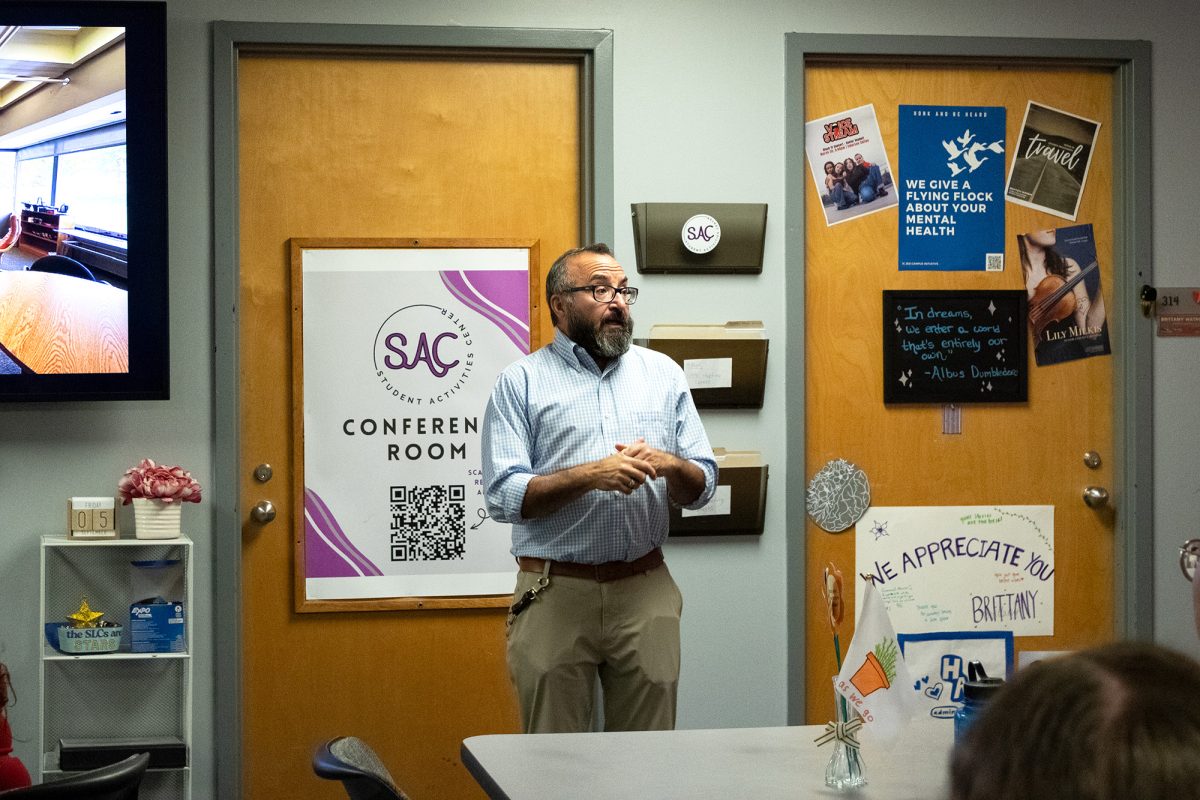Radon is an invisible, odorless and radioactive gas that is prevalent in 34 out of the 62 counties of New York state and is the second leading cause for lung cancer in the U.S., according to the Centers of Disease Control and Prevention. New York state, however, does not require testing for radon in any building or at any institution.
Tompkins County is located in a high-risk area for radon, meaning 35% of basements in the county have more than 4 picocuries per liter (pC/L) of radon, the EPA’s limit for safe radon exposure. Basements are typically tested for radon because they are the lowest level in a house, where radon typically builds up. Radon is derived from Uranium-238 after it decays and can be found in certain types of soil like shale because of the high amount of organic material found in shale. This organic material consists of dead organisms that were once found on the surface of the planet and acts as a host for radioactive minerals like Uranium.
Radon Levels at Ithaca College
The New York state map of radon shows an unequal balance of the gas throughout New York state counties. This is because areas around the state have different soil contents.
Michael Stone, associate director of Environmental Health and Safety at the college, said areas like Cortland County, which have a radon exposure percentage of 72% in basements, have a high soil content of shale. Stone said older homes in the county have basements with dirt floors, making these homes more likely to be exposed to radon gas.
“Where I live in Cortland County, which is like the highest county in New York state for radon, I have a remediation system in my basement because my basement is built under and around shale,” Stone said. “The soils on top are like real tight clay, so it’s an impenetrable barrier. So [radon gas] looks for the path of least resistance and that’s into the basement. Out here where you have Circles [apartments], everything is built on slab-on-grade [concrete].”
Stone said slab-on-grade concrete sits on top of the layer of soil beneath it and acts as a cap for radon gas and forces the gas sideways, away from buildings. Stone also said the gravel that is laid outside of the residential buildings on campus helps to form this cap.
“So the radon would rather go up than sideways [in shale soil],” Stone said. “There’s nothing keeping that radon from going up and out through the soil. So if it’s coming up underneath the building, it hits that gravel, solid concrete it’s gonna go sideways until it gets up and out.”
While the college has residence halls with basement levels, Stone also said basement levels on the college’s campus are built on a slope and were built on the hill’s surface level, not underground, like basements in houses.
New York state does not require radon testing in any buildings despite 55% of the state’s counties being assigned Zone 1 for radon by the EPA. Zone 1 indicates a high-level area for radon.
Stone also said the college is not required to test for radon and said three main factors make the infrastructure residence halls are built on less susceptible to radon exposure. These factors include the college being built on a hill, low radon-producing shallow soils and concrete construction beneath each residence hall.
“The pathways to get in are severely restricted,” Stone said. “If we thought it was a problem, we would test, but there’s zero indication and all the factors lineup saying it’s not going to be a problem here.”
Calvin Prothro, professor in the Department of the Environment, said that if concrete foundations have cracks, this could allow for the gas to get into buildings as well as through pipes and bathroom plumbing. He said this is not an issue if there is ample ventilation and said radon gas is constantly being produced and is in the ambient air. Prothro said radon gas becomes a problem once there is a high concentration of it and little airflow.
“[The first floor] acts almost as a cap so gasses can build up down [in the basement] and then seep through any fractures or pathways,” Prothro said. “This is where most people have their laundry rooms, or family rooms. So you spend a lot of time down here. And that’s the danger because you’re breathing it in.”
Prothro said there are mitigation strategies for buildings that test high for radon exposure. He said better ventilation is good mitigation. The EPA also suggests air-to-air exchangers to increase ventilation; house or room pressurization, to create enough pressure at the lowest level of a home to decrease radon getting in; and sealing cracks in a building’s foundation.
“Just keep the windows open, put a fan in the window and run it especially in the wintertime,” Prothro said. “It may make your room a little cold, but it’s better than breathing radon gas in.”
Importance of Testing for Radon
Radon gas is in the ambient air and with good filtration, will not be harmful. However, if ingested, radon will begin to emit an alpha particle. Prothro said alpha particles are not harmful outside of the body because they do not have enough energy to penetrate the exterior of the skin. However, when concentrated amounts get into a person’s lungs, the alpha particles have enough energy to knock off parts of a person’s DNA, which will make a cell replicate differently, causing cancer.
According to the New York State Department of Health, lung cancer was the most prevalent type of cancer in Tompkins County between 2016-20.
Samantha Hillson, public information officer in Tompkins County, said the Tompkins County Whole Health Department encourages its residents to test for radon each year during the county’s annual Radon Awareness Week.
She said residents can test their homes for radon through the Healthy Neighborhoods Program. Hillson also said the county has a grant from the New York State Department of Health to make radon tests for county residents $12, which includes the testing device, postage to the laboratory and lab analysis.
“[The tests] are little canisters of charcoal and that charcoal is able to absorb gasses,” Hillson said. “The gasses can then be analyzed in a lab and results can be sent back.”
The grant that supports HNP makes anyone who lives in the Village and Town of Groton, City of Ithaca and Town of Ithaca, mobile home parks in the county, referrals for social service agencies, Town of Enfield, Town of Newfield and Town of Dryden eligible for the program. The program is also open to people who do not own their homes or are tenants.
Hillson said the program targets communication to residents of Tompkins County but said there is little communication about HNP toward college students. She said college students can subscribe to email notifications and newsletters sent through the county Department of Whole Health.
Senior Sam Stys, who lives in a house off campus, said he is not aware how to deal with radon, besides test for the gas. He said he does not know where he would go from there if his house were to have high levels of radon in the air.
“Initially, I didn’t really think it applied to me because I only rent my house and have not lived here long,” Stys said. “Then I realized that my landlords may not be required to test for radon and it’s very possible that there could be some in my house.”















